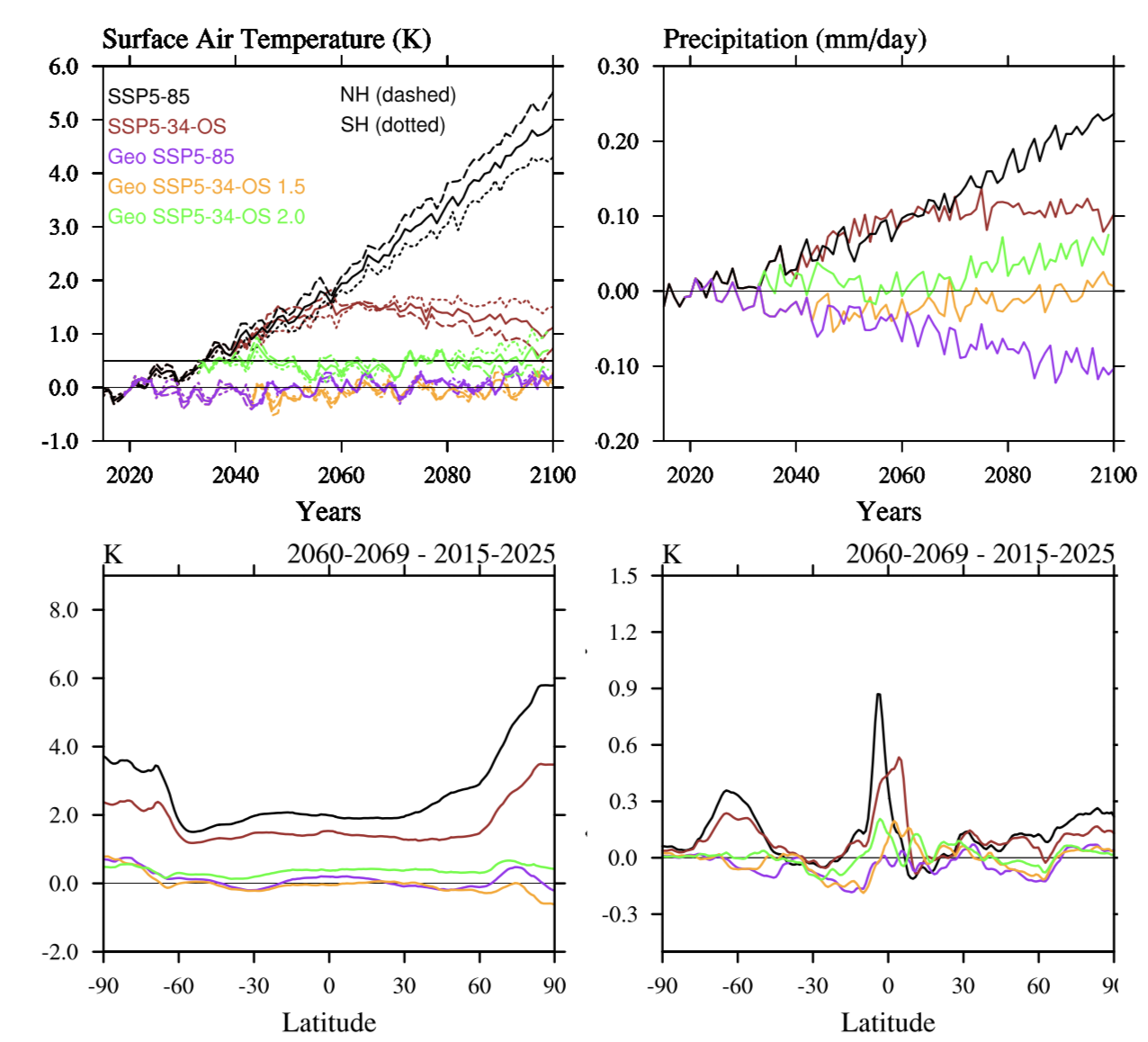Geoengineering Overshoot Experiment
Stratospheric aerosol geoengineering experiments reaching 1.5°C and 2.0°C temperature targets.
Current stratospheric aerosol geoengineering experiments do not include any scenarios that would reach the desired temperatures targets of 1.5 of 2.0 warming compared to pre-industrial conditions. This work is filling this gab and defines a new testbed model experiments for the Geoengineering Model Intercomparison Project (GeoMIP) that are designed to limit global warming to 1.5 or 2.0°C above 1850-1900 conditions using stratospheric aerosol geoengineering (SAG). We propose that this experiment to be used by other modeling groups in order to identify consequences of a scenario that includes strong mitigation, decarbonization and limited SAG applications on societal impacts and ecosystems and the potential range of outcomes over a range of scenarios.
The new proposed modeling experiments use the overshoot scenario defined in CMIP6 (SSP5-34-OS) as a baseline scenario and are designed to limit side effects of SAG in reaching three temperature targets: global mean surface temperature, inter-hemispheric and pole-to-equator surface temperatures. We further compare results to another SAG simulation using a high emission scenario (SSP5-85) as a baseline scenario in order to investigate the dependency of impacts using different injection amounts. The new testbed simulations are performed with the Community Earth System Model version 2 with a whole atmosphere model (CESM2(WACCM6)). We use a feedback algorithm that identifies the needed amount of sulfur dioxide injections in the stratosphere at four predefined locations, 30°N, 15°N, 15°S, and 30°S, in order to reach three temperature targets, including global, as well as interhemispheric and pole-to-equator gradients. We find that changes from present day conditions (2015-2025) in some impact variables depend strongly on the defined temperature target (1.5°C vs 2.0°C), including changes in ice sheet surface mass balance, the Atlantic Meridional Overturning Circulation (AMOC), while others, including global precipitation changes and the recovery of the Antarctic ozone hole, depend strongly on the amount of SAG application. Land net primary productivity depends mostly on the global atmospheric CO2 concentration and therefore the baseline scenario. Furthermore, reaching the three temperature targets reduces precipitation shifts that occur in the baseline scenarios. Comparisons to earlier results, in particular differences in sign of the AMOC response with SAG indicate a strong model dependency on potential impacts for example fishery.

Paper to be submitted:
Simone Tilmes, Doug E. MacMartin, Jan Lenaerts, Leo van Kampenhout, Laura Muntjewerf, Cheryl S. Harrison, Lili Xia, Mike M. Mills, Ben Kravitz, and Alan Robock.
Contact
Please direct questions/comments about this page to:
Carl Drews
NSF NCAR | Research IT | ACOM